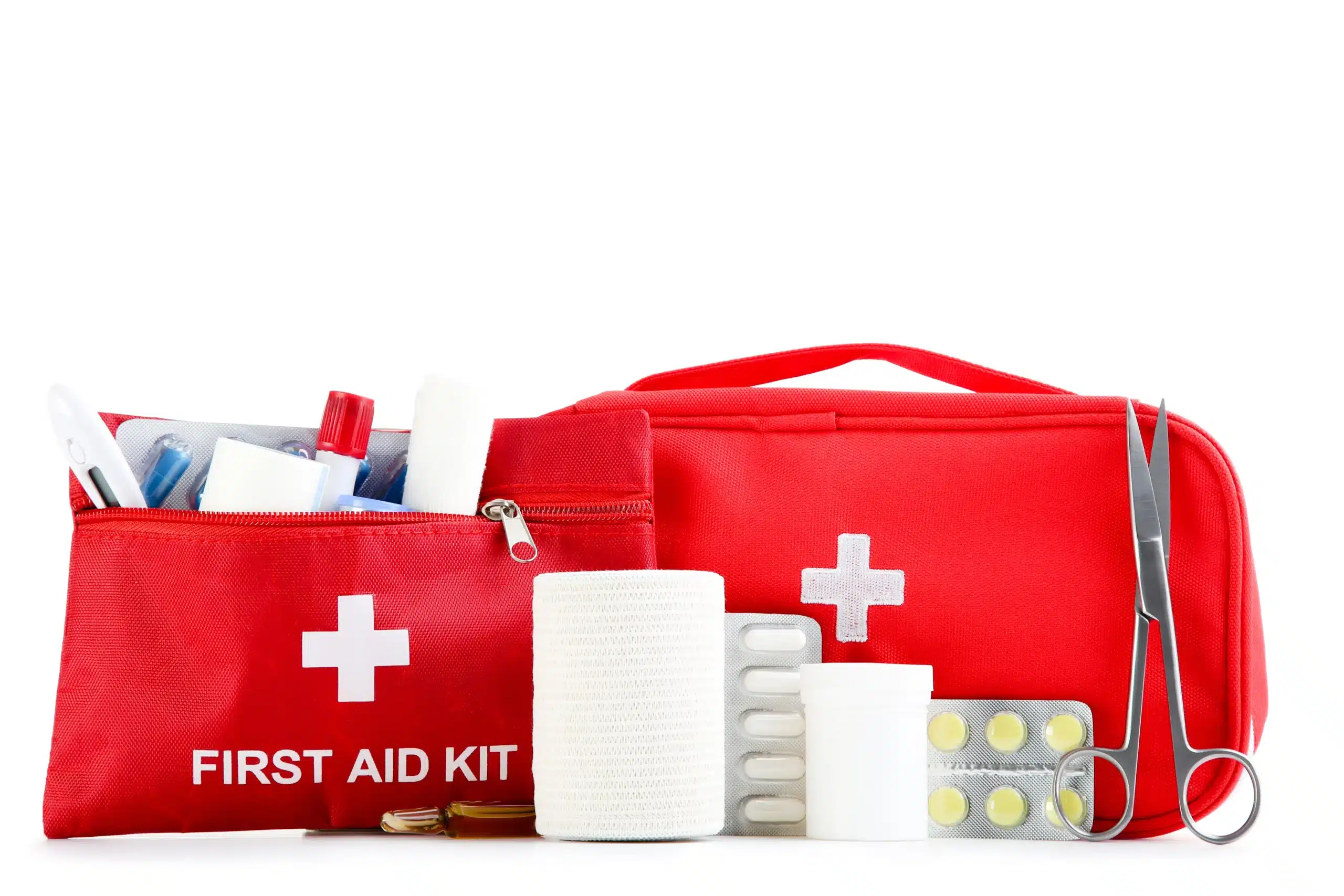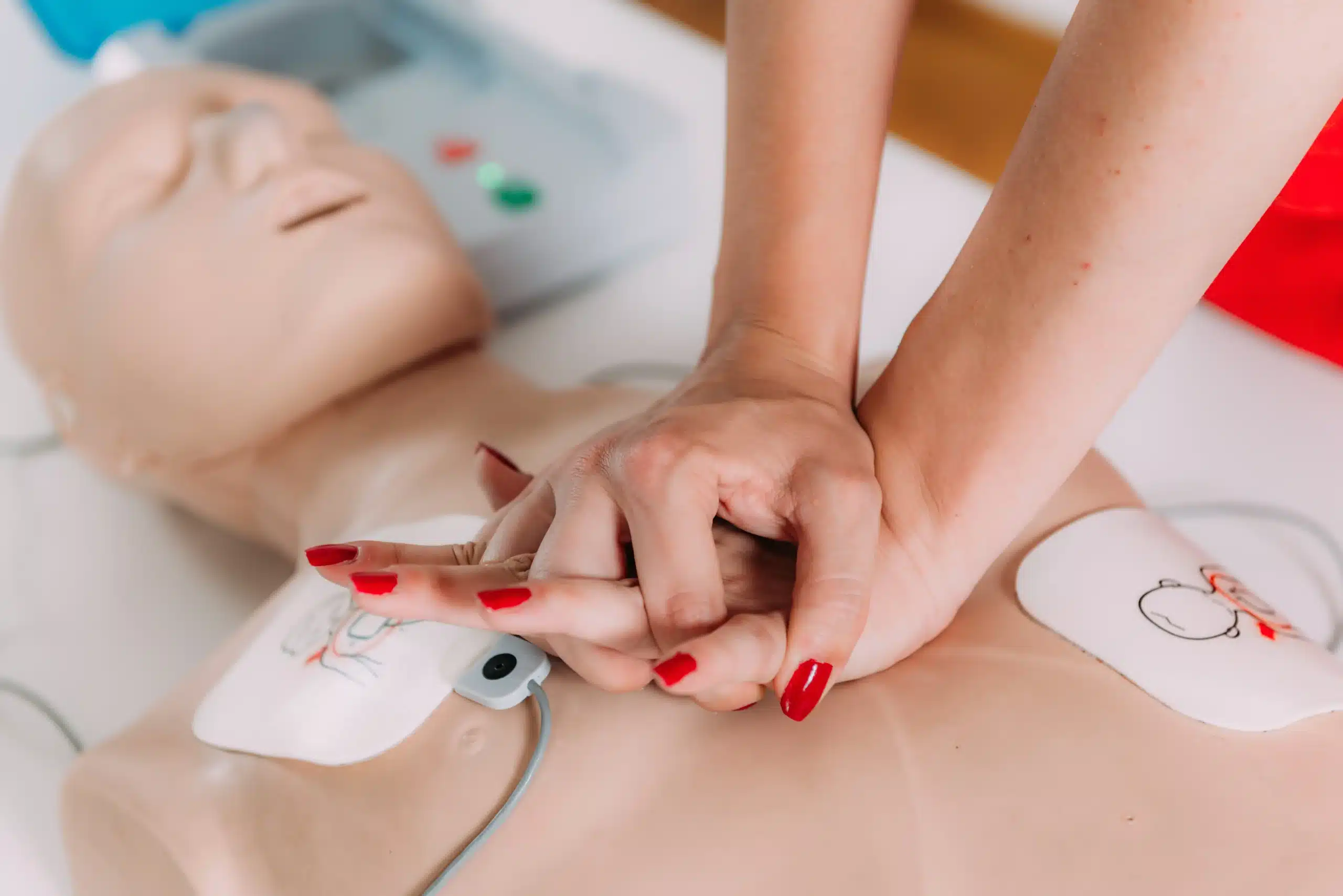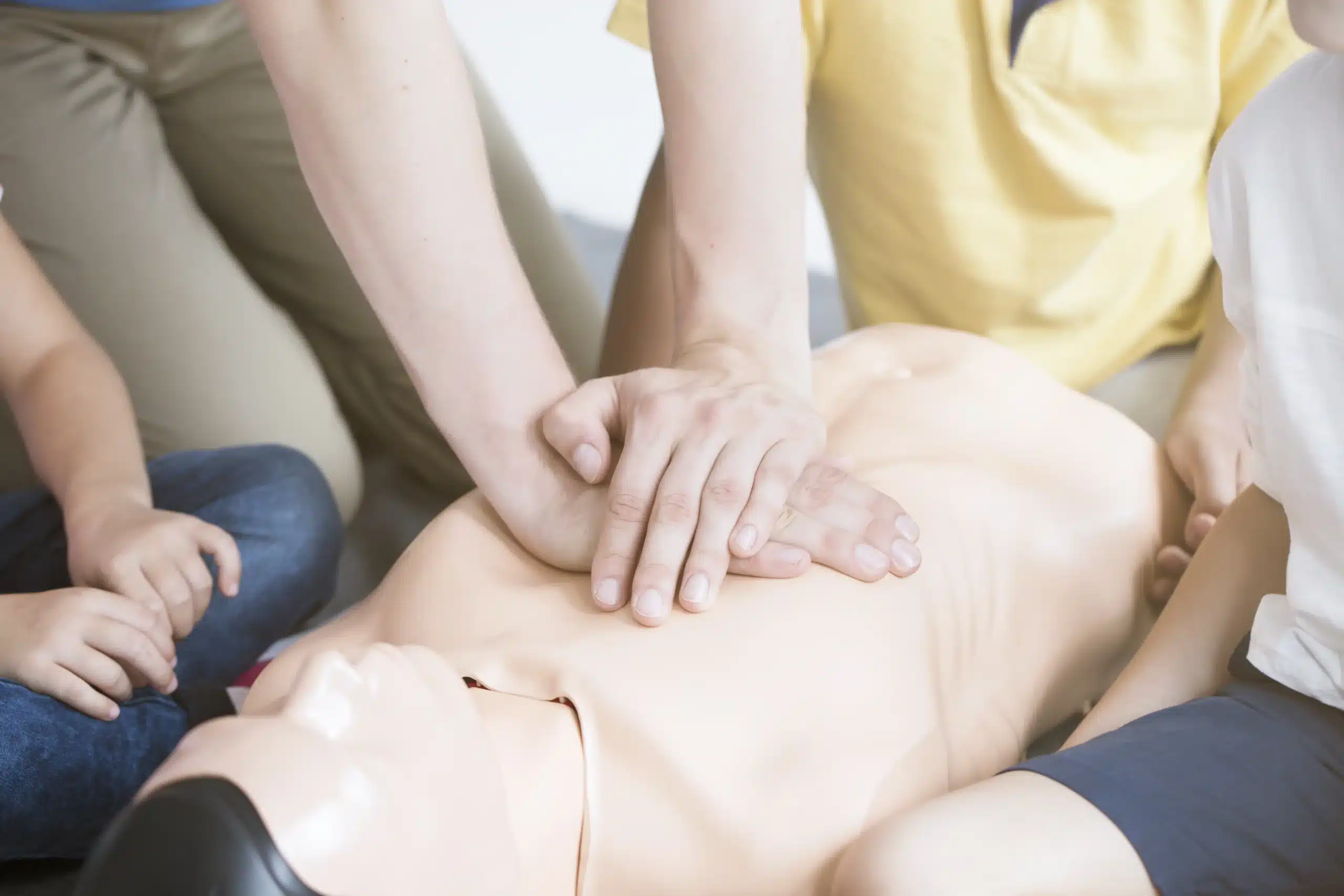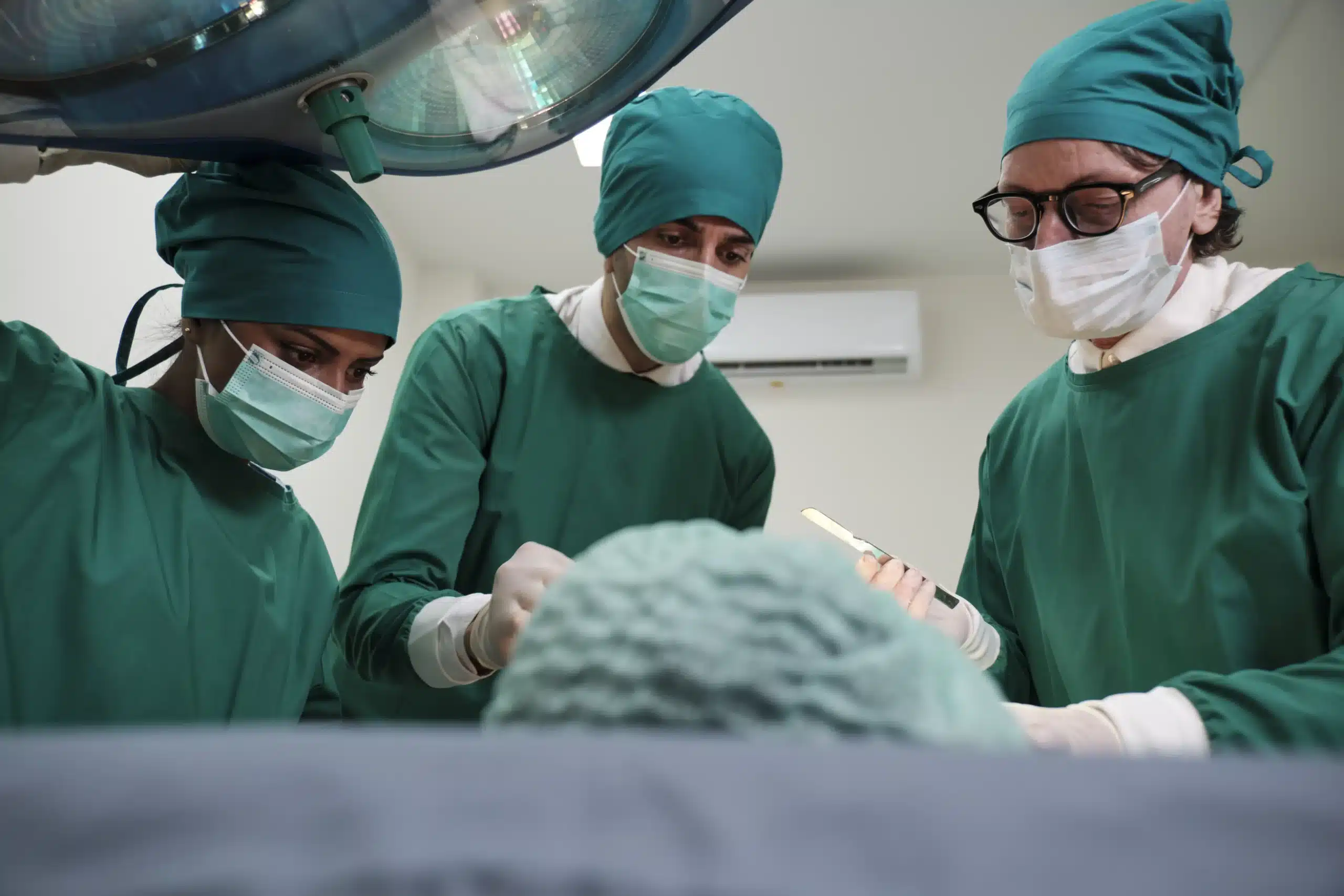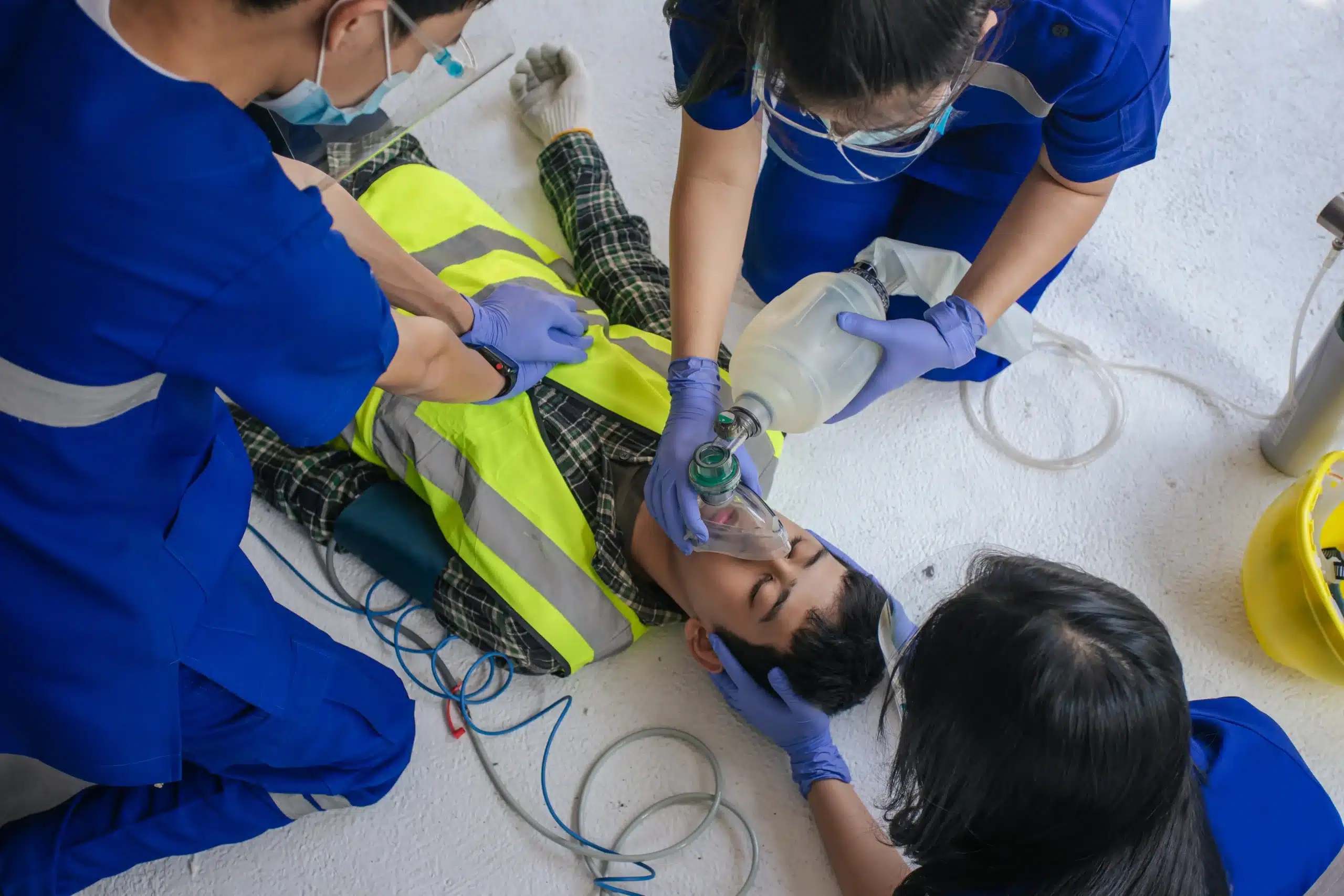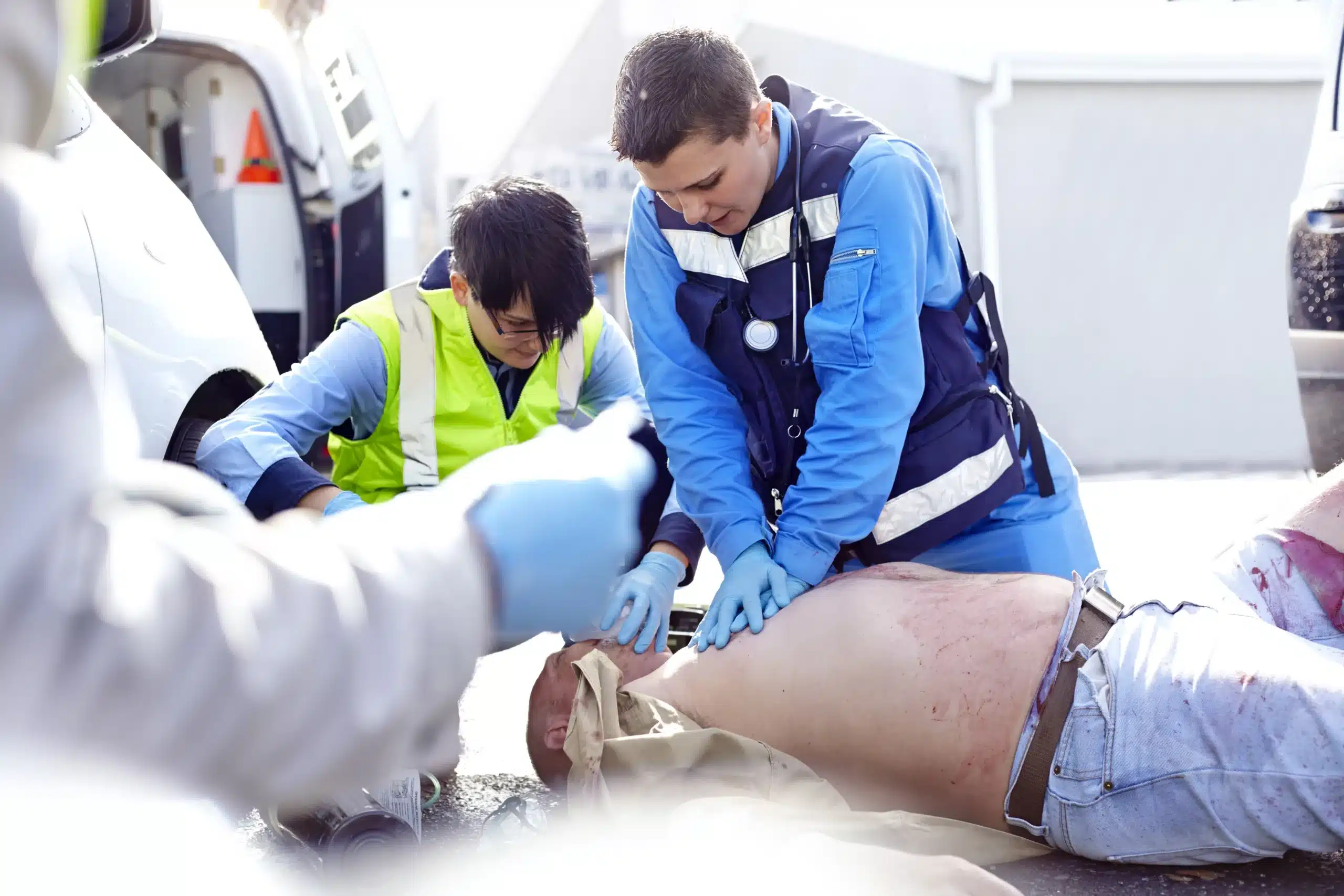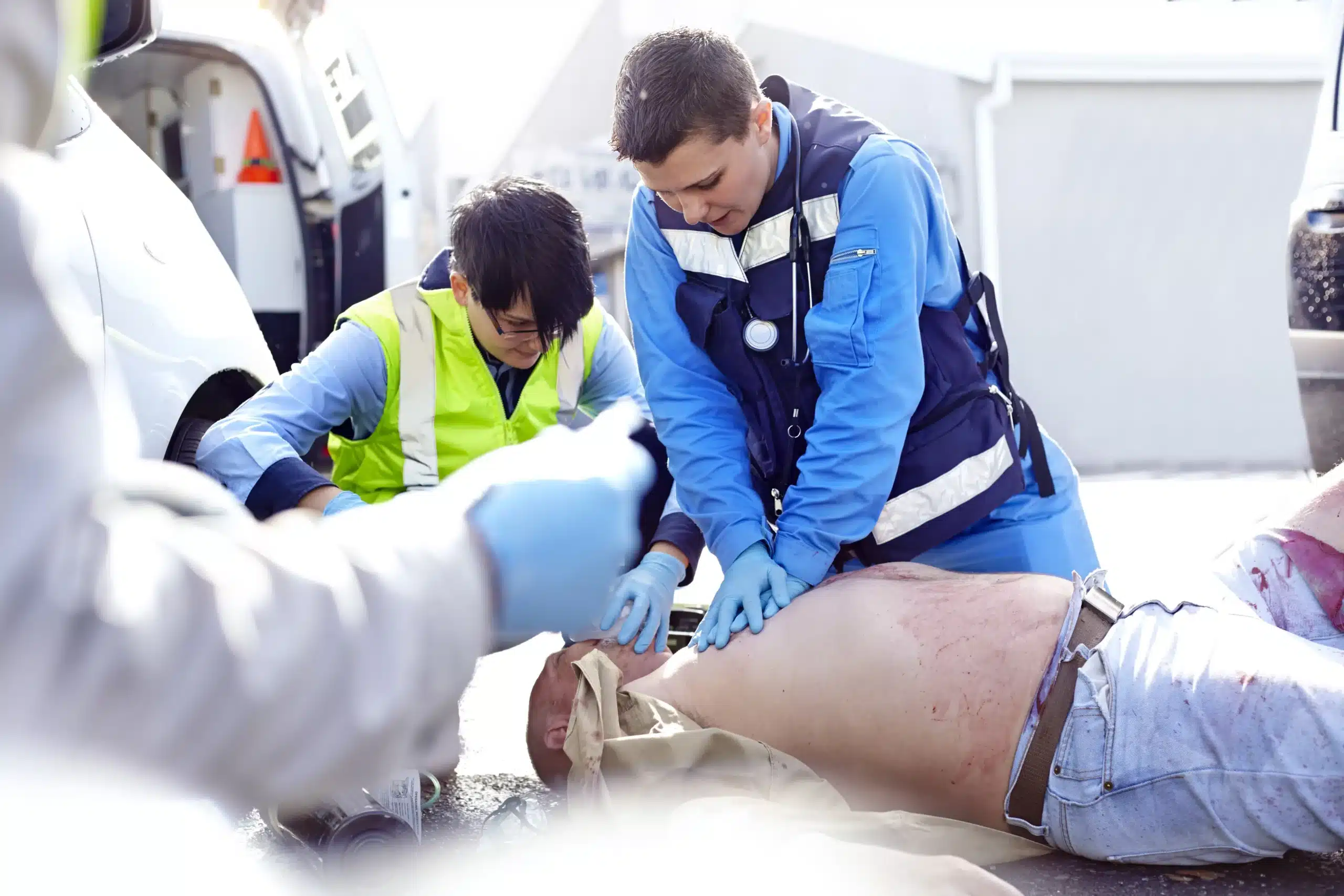Life has a way of throwing curveballs when you least expect them. A sudden injury at home, an accident on the playground, or a medical emergency at a community event—these situations can be unsettling, especially if you don’t know how to help. That’s where first-aid training comes in. Equipping yourself with these essential skills can empower you to respond effectively and confidently in any situation. Whether you’re searching for “first-aid classes near me” to fulfill a job requirement, enhance your personal preparedness, or simply gain valuable life skills, this guide will break down everything you need to know about finding and benefiting from first-aid training. We’ll explore what first-aid classes cover, how to find reputable training providers, the costs involved, and how to use these skills in your daily life.
Key Takeaways
- Be prepared for anything with first-aid training: Equipping yourself with these skills allows you to confidently handle medical situations, big or small, and potentially make a life-saving difference. Find a course that fits your schedule and learning style.
- Choose a reputable training provider: Look for certifications, comprehensive courses, and hands-on practice to ensure you receive high-quality instruction and gain practical experience. Consider what’s important to you, whether it’s in-person interaction or online flexibility.
- Keep your skills sharp and your kit stocked: Regularly review your first-aid knowledge and maintain a well-stocked kit at home, in your car, and at work. Being prepared means having the right supplies and the confidence to use them effectively.
What are First-Aid Classes?
First-aid classes equip you with the skills and knowledge to respond effectively to medical emergencies. These classes cover a range of topics, from treating minor injuries to managing life-threatening situations. Learning these essential skills can make a real difference. Let’s explore what these classes typically entail.
CPR and AED Training
CPR (Cardiopulmonary Resuscitation) and AED (Automated External Defibrillator) training are often core components of first-aid classes. These skills are crucial for responding to cardiac emergencies. CPR involves chest compressions and rescue breaths to maintain blood flow and oxygen until professional help arrives. AED training teaches you how to use an automated external defibrillator, a device that can restore a normal heart rhythm in sudden cardiac arrest. You can find more information on CPR training, including BLS, ACLS, and PALS certification, on our website.
Basic First Aid
Basic first-aid training covers essential skills to handle a variety of common medical situations. You’ll learn how to clean and dress wounds, control bleeding, manage burns, sprains, and fractures, and respond to allergic reactions and choking incidents. These classes provide a practical foundation for handling everyday injuries and illnesses. For those in Hayward, Union City, or San Leandro, we offer comprehensive first-aid training. Contact us to learn more about our schedule and availability.
Specialized Courses
Beyond basic first-aid and CPR/AED training, there are specialized courses designed for specific needs and environments. These might include pediatric first aid for childcare providers, wilderness first aid for outdoor enthusiasts, or workplace safety training to address occupational hazards. Some courses also cover advanced life support techniques. Depending on your profession or personal interests, these specialized courses can provide valuable, targeted training. We offer a range of specialized courses, including RQI classes for healthcare professionals.
Find Reputable First-Aid Training
Finding the right first-aid training provider is key to learning life-saving techniques. It’s not just about getting a certificate; it’s about gaining the confidence and skills to respond effectively in an emergency. Here’s how to find a program that meets your needs:
Research Local Options
Start by exploring first-aid training providers in your area. Consider factors like class schedules, location, and the specific courses offered. Look for providers that offer a variety of courses, from basic first aid and CPR to more specialized training. A good starting point is often your local American Red Cross chapter or community college. For those in and around Hayward, Union City, and San Leandro, Hayward CPR Classes offers a comprehensive range of American Heart Association certification courses.
Verify Certifications and Accreditations
Ensure the training provider and their instructors have the proper certifications and accreditations. This shows they meet established standards for curriculum, training methods, and instructor qualifications. Look for accreditation from nationally recognized organizations like the American Heart Association or the American Red Cross. A reputable provider will readily share this information. Hayward CPR Classes is a woman-owned AHA Training Center, offering daily classes in over 60 cities.
Evaluate Reviews and Testimonials
Reading reviews and testimonials from past students offers valuable insights into a program’s quality. Look for comments about the instructors’ teaching style, the course content, and the overall learning experience. Did students feel prepared to use their skills? These firsthand accounts can help you make an informed decision. Don’t hesitate to ask a potential provider for references or check online review platforms. For additional tips on evaluating training providers, check out this helpful article on evaluating safety training.
How Much Do First-Aid Classes Cost?
Knowing the cost of first-aid training is an important part of planning your certification. Prices depend on several factors, including the type of course, your location, and whether you learn in person or online. Let’s break down the typical costs associated with different first-aid and CPR classes.
Pricing for Different Course Types
Basic first-aid and CPR classes usually range from $40 to $60 per person. More advanced courses, like BLS for Healthcare Providers, typically cost a bit more, around $80. Specialized training, such as ACLS (Advanced Cardiovascular Life Support) or PALS (Pediatric Advanced Life Support), will be a larger investment due to the advanced skills taught. Remember that prices can vary, so it’s always best to check with specific training providers in your area, like Hayward CPR Classes, for their current pricing. You can also explore options like CPR Education, which provides classes in Hayward and surrounding areas.
Group Discounts and Special Offers
Many training centers offer discounts for group bookings, making it a cost-effective option for workplaces, community groups, or families learning together. Check with providers like Hayward CPR Classes for information on group discounts. Some organizations also run occasional promotions or special offers, so keep an eye out for those opportunities to save. Safety Training Seminars is another provider offering various courses in Hayward.
Free or Low-Cost Community Programs
While less common, free or low-cost first-aid and CPR training may be available through community programs. For example, some volunteer organizations or local fire departments might offer occasional free courses. Joining a CERT (Community Emergency Response Team) often provides free training as part of their program. While finding completely free certification can be challenging, exploring these options might help you access valuable training at a reduced cost. You can also check online forums like Reddit for discussions on finding affordable training. Remember that Hayward CPR Classes offers a variety of courses, including RQI classes, and serves nearby cities like Union City and San Leandro. For any questions, you can always contact them directly.
In-Person vs. Online First-Aid Classes: Which is Right for You?
Deciding between in-person and online first-aid training depends on your learning style and schedule. Both formats have advantages, so let’s break down the pros and cons to help you choose.
Benefits of Hands-On Training
In-person first-aid classes offer valuable opportunities to practice techniques in a controlled environment. You’ll work with instructors and classmates, ask questions, and receive immediate feedback. This hands-on experience is especially helpful for mastering essential skills like CPR and bandaging. The physical interaction and practical exercises can boost your confidence for real-life emergencies. Direct interaction with an instructor often leads to better information retention and quicker responses in critical situations.
Advantages of Online Learning
Online first-aid courses offer flexibility. You learn at your own pace, fitting the training around your schedule. This format is perfect for self-directed learners or those with limited time. Online learning has become increasingly popular and studies show it can be as effective as in-person instruction. This makes it a convenient option for many seeking first-aid certification.
Choose the Best Format
The best format depends on your needs and preferences. If you thrive in interactive settings and value hands-on practice, an in-person class might be better. If you need a flexible schedule and prefer self-paced learning, an online course could be more suitable. Consider your learning style and how you best absorb information. Both formats can be effective, so weigh the pros and cons to see which approach best aligns with your lifestyle and learning goals. Research suggests success in either format often depends on your self-discipline and motivation.
What to Expect in a First-Aid Class
Knowing what to expect can help you feel prepared and confident going into your first-aid training. Here’s a general overview, but remember specifics might vary depending on the provider and the type of first-aid course you choose. For the most accurate information, always check with your chosen training center, like Hayward CPR Classes, before you enroll.
Course Duration and Structure
Most first-aid classes are designed to be completed in a single session, typically lasting around three hours. Some courses might be offered over a couple of shorter sessions or incorporate blended learning with online modules and in-person skills practice. Hayward CPR Classes offers a variety of scheduling options, so visit their website to find a class time that works for you.
Theoretical and Practical Components
First-aid courses cover essential topics, including CPR, how to use an AED, and basic first-aid techniques for common injuries like cuts, burns, and sprains. The curriculum blends theoretical learning with hands-on practice. You’ll learn the principles behind each technique and then practice those skills in a safe and controlled environment. This combination of knowledge and practical application ensures you’re well-prepared to respond effectively in a real-life emergency. If hands-on training is important to you, choose an in-person class or a blended learning format that includes in-person skills sessions. Contact Hayward CPR Classes to learn more about their different course options.
Certification Process and Validity
Upon successful completion of the course, you’ll receive a certification card. Most first-aid certifications, like those from the American Red Cross and the American Heart Association, are valid for two years. This means you’ll need to retake the course and get recertified to keep your skills current and your certification valid. Hayward CPR Classes offers renewal courses to make this process easy and convenient. Remember to check with your employer or organization to confirm their specific requirements for first-aid certification.
Prepare for Your First-Aid Class
Getting ready for your first-aid class involves a little bit of prep work. Knowing what to expect and how to prepare can make your learning experience smoother and more effective. Here’s a breakdown of how to get ready:
Required Materials and Equipment
Most first-aid courses provide the necessary equipment for practice during class, including bandages, dressings, and CPR mannequins. You likely won’t need to bring anything with you. Double-check with your chosen training provider—like Hayward CPR Classes—to confirm their specific requirements. Some classes, especially those geared towards healthcare professionals taking American Heart Association courses, may suggest having a personal pocket mask for hygiene purposes, but this isn’t usually mandatory. For those looking for more advanced training, consider exploring RQI classes for healthcare providers.
Pre-Course Study Resources
While pre-course study isn’t typically required for basic first-aid certification, familiarizing yourself with basic first-aid principles can be helpful. Numerous online resources are available, including articles and videos demonstrating basic techniques. Brushing up on these concepts beforehand can give you a head start in class. However, remember that in-person training offers valuable hands-on practice and feedback from certified instructors, which online resources often lack. Choosing the right course format depends on your learning style and preferences. If you’re in or around Hayward, you can find a variety of first-aid training options to suit your needs.
Dress Code and Physical Requirements
First-aid classes often involve physical activity, including practicing CPR and other hands-on techniques. Wear comfortable clothing that allows for a full range of motion. You’ll be kneeling, bending, and moving around, so avoid restrictive clothing. Comfortable shoes are also a must. If you have any physical limitations or concerns, it’s always a good idea to discuss them with your instructor before the class begins. They can offer modifications or adjustments to ensure you can fully participate and get the most out of the training. CPR and first-aid certification classes are widely available in Hayward. Consider checking for group discounts if you’re signing up with friends or colleagues.
Why Regular First-Aid Training Matters
Knowing what to do in a medical emergency can make all the difference. But even if you’ve taken a first-aid course before, regular training is key to keeping those skills sharp and your confidence high.
Keep Skills Updated
First-aid guidelines and techniques change as medical knowledge evolves. Regular training ensures you’re using the most current practices, giving you the best chance to help someone in need. The Red Cross emphasizes the importance of staying up-to-date with these lifesaving skills. Plus, refreshing your knowledge can boost your confidence in handling emergencies.
Renew Your Certification
Most first-aid certifications are valid for about two years. Renewing your certification demonstrates your commitment to providing effective care and keeps you familiar with the latest protocols. This is essential for anyone working in healthcare, childcare, or any field where first-aid knowledge is critical.
Continuing Education Opportunities
Look for opportunities to build on your basic first-aid knowledge. Continuing education programs often offer hands-on training, which is crucial for mastering practical skills. Healthline First Aid focuses on the real-world application of first-aid techniques. A supportive learning environment, like the one offered by CPR Certification Dallas, can also make a big difference in your learning experience. The more comfortable you are practicing these skills, the more prepared you’ll be in a real emergency. This ongoing learning can significantly improve your ability to respond effectively and confidently to various medical situations.
First-Aid Training Providers in Hayward, CA
Finding the right first-aid training program is crucial for anyone who wants to be prepared for emergencies. Luckily, Hayward, CA, and the surrounding areas offer a variety of options to suit different needs and schedules. Here are some reputable providers to consider:
Hayward CPR Classes
Hayward CPR Classes offers a comprehensive selection of American Heart Association (AHA) certification courses, including CPR, first aid, and Basic Life Support (BLS). They focus on providing high-quality training at affordable prices, with special discounts for groups. As a woman-owned AHA Training Center, they offer daily classes in over 60 cities and guarantee the lowest prices in Alameda County. Their convenient Hayward location serves Hayward, Union City, and San Leandro. You can explore their CPR and first-aid certifications on their website. They also offer RQI classes. For more information, you can contact them directly.
American Red Cross
The American Red Cross is a nationally recognized organization that provides a wide range of first-aid and CPR training. Their programs equip individuals with the skills and knowledge to respond effectively to various emergencies. Check their website to find a class near you.
Local Community Colleges and Universities
Many community colleges and universities in the Hayward area offer first-aid and CPR training programs. These courses are often integrated into health and safety programs, making them accessible to students and community members. Chabot College and California State University, East Bay, are good places to start your search.
St. Joseph’s Medical Center
St. Joseph’s Medical Center, a trusted healthcare provider in the area, may offer first-aid and CPR training programs. Contact the medical center directly or check their website for information on available courses and schedules.
Kaiser Permanente
Kaiser Permanente, a leading healthcare organization, often provides first-aid and CPR training for both its employees and the community. Check their website or contact your local Kaiser Permanente facility for more information.
Sutter Health
Sutter Health, another prominent healthcare system, may offer comprehensive first-aid and CPR training. Visit their website or contact a Sutter Health facility in your area to learn about available courses.
Use First-Aid Skills in Your Daily Life
Knowing first aid is like having a superpower—it empowers you to handle everyday mishaps and respond effectively in emergencies. From a scraped knee to a more serious incident, your skills can make all the difference. Let’s explore how you can use your first-aid knowledge in your daily life:
Create a Home First-Aid Kit
A well-stocked first-aid kit is your best friend for handling minor injuries at home. Think of it as your personal health toolkit, ready for anything. Make sure your kit includes essentials like adhesive bandages, antiseptic wipes, gauze pads, adhesive tape, scissors, tweezers, and a digital thermometer. You can find pre-assembled first-aid kits or create your own. Keep it easily accessible and check it regularly to restock expired items or replace used supplies.
Recognize Common Emergency Situations
Understanding common emergencies is key to responding effectively. Knowing how to recognize the signs of a heart attack, stroke, choking, or severe bleeding can help you react quickly and provide appropriate care. It’s also important to be aware of common first-aid misconceptions. For example, applying butter to a burn can actually worsen the injury. MyCPR NOW offers valuable information on debunking these myths. Being prepared and knowing what not to do is just as important as knowing the right steps to take.
Apply First-Aid Knowledge
Your first-aid training goes beyond simply knowing what to do—it’s about confidently applying that knowledge when it matters most. Whether it’s performing CPR, managing a nosebleed, or treating a minor burn, your skills can help stabilize a situation until professional help arrives. Regularly reviewing your first-aid knowledge and practicing key techniques can build your confidence and ensure you’re prepared. Mainland Safety offers insights into applying first-aid knowledge effectively. Remember, even seemingly small actions, like properly cleaning and bandaging a cut, can prevent infection and promote faster healing.
Related Articles
- CPR Courses in Hayward: Find the Right Class for You – Hayward CPR Classes
- First Aid in Union City: Your Complete Guide – Hayward CPR Classes
- Pediatric CPR & First-Aid Training in Union City – Hayward CPR Classes
- Online PALS Classes in Union City: Your Guide – Hayward CPR Classes
- Find Basic Life Support (BLS) Training in Union City – Hayward CPR Classes
Frequently Asked Questions
How do I choose between online and in-person first-aid training? Think about your learning style and how much time you have. In-person classes offer hands-on practice and direct interaction with instructors, which is great for mastering physical skills. Online courses offer flexibility, allowing you to learn at your own pace and fit the training around your schedule. Both are effective, so consider what works best for you.
What should I expect during a first-aid class? Most classes combine theoretical learning with practical exercises. You’ll learn essential techniques and then practice them in a safe environment. Expect to cover topics like CPR, AED use, and how to manage common injuries. Classes usually run for a single session of around three hours, but some might be spread out over a few shorter sessions.
How much does first-aid training cost? The cost varies depending on the course type, location, and training provider. Basic first-aid and CPR classes typically range from $40 to $60. More advanced courses like BLS or specialized training will likely be more expensive. Many providers offer group discounts, so inquire about those if you’re learning with others.
How can I find reputable first-aid training providers in my area? Start by searching online for local providers. Check for certifications from organizations like the American Heart Association or the American Red Cross. Read reviews and testimonials from past students to get a sense of the program’s quality. Don’t hesitate to contact providers directly to ask about their curriculum, instructors, and any other questions you may have.
Why is it important to refresh my first-aid training regularly? First-aid guidelines and best practices can change over time. Regular training ensures your knowledge is current and your skills are sharp. Plus, most certifications expire after two years, so renewing your training keeps your credentials valid. Staying up-to-date means you’re better prepared to confidently and effectively help someone in need.
